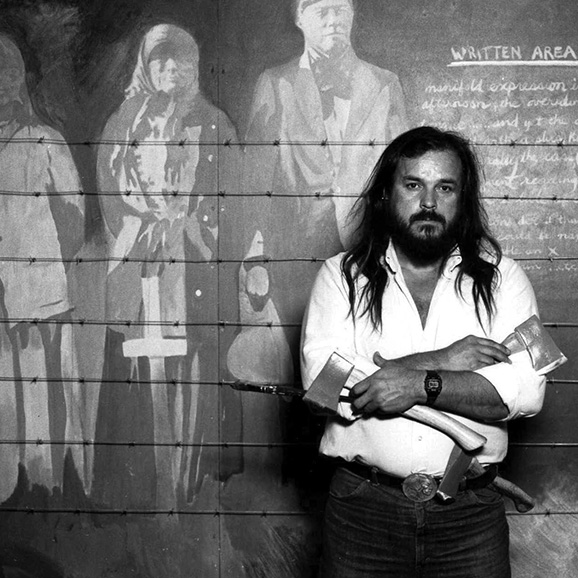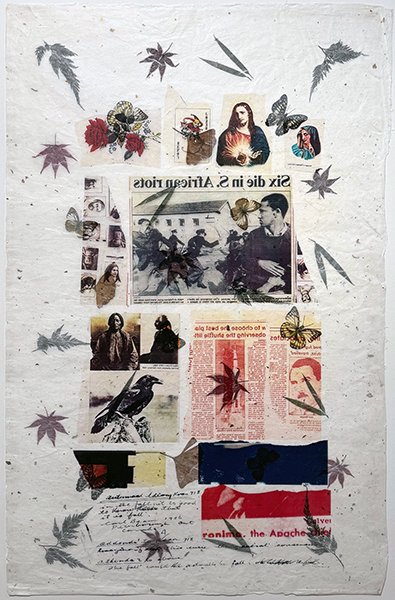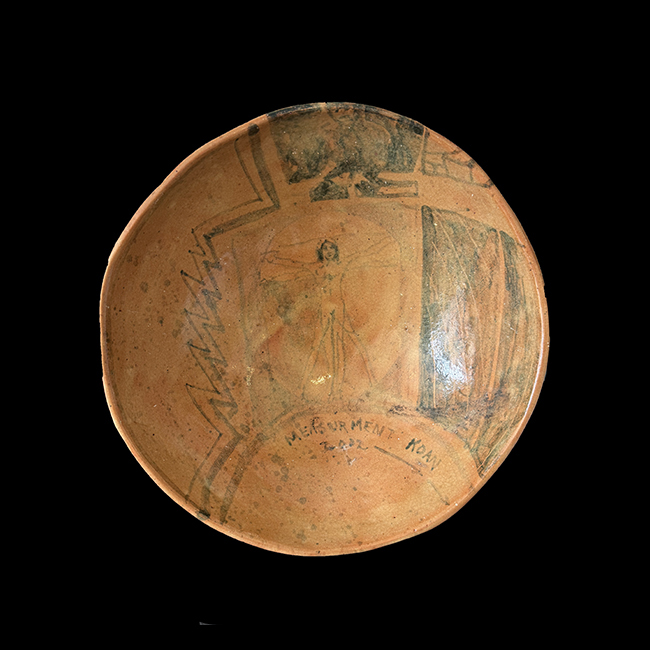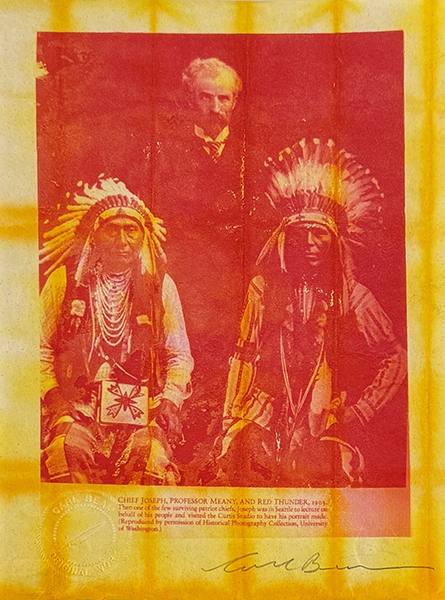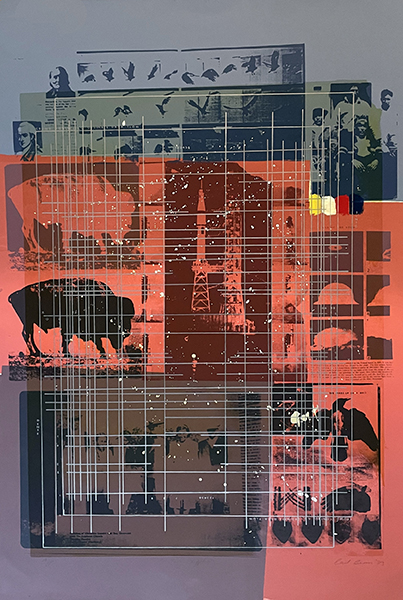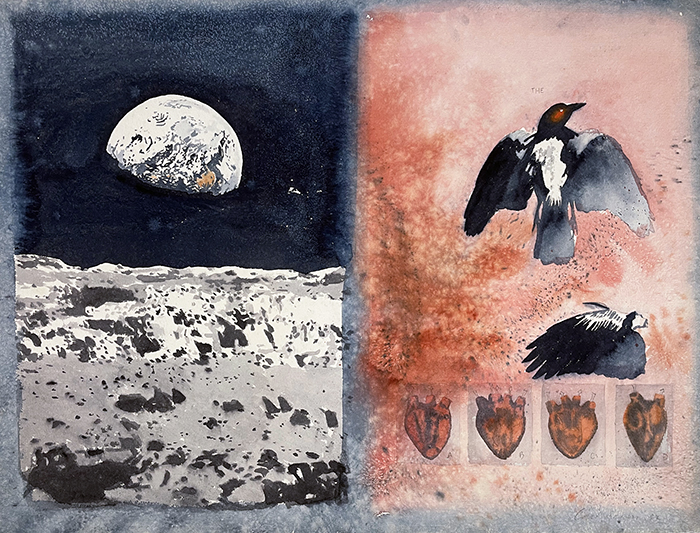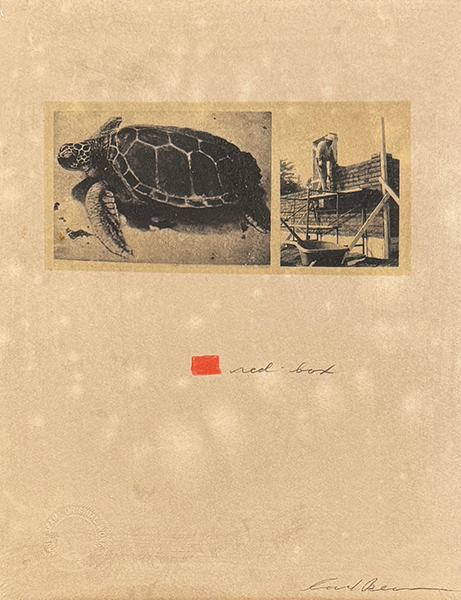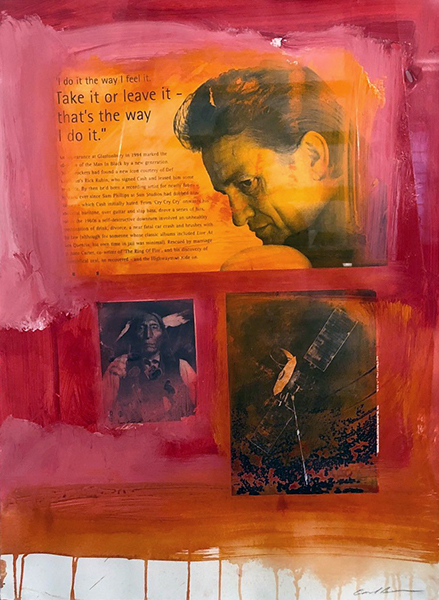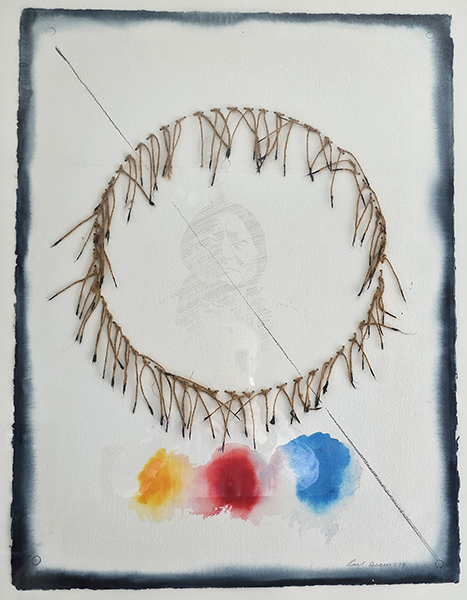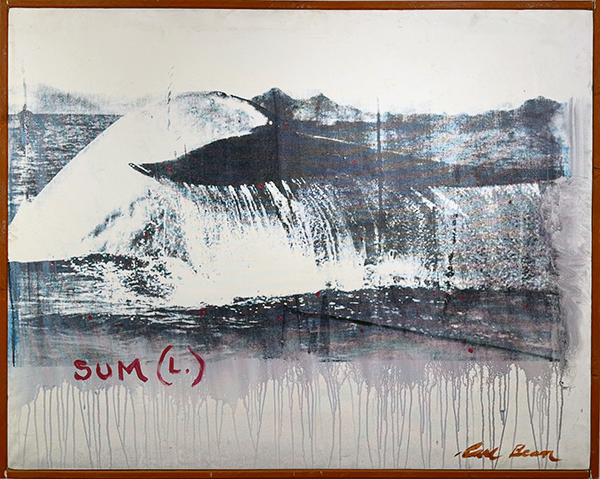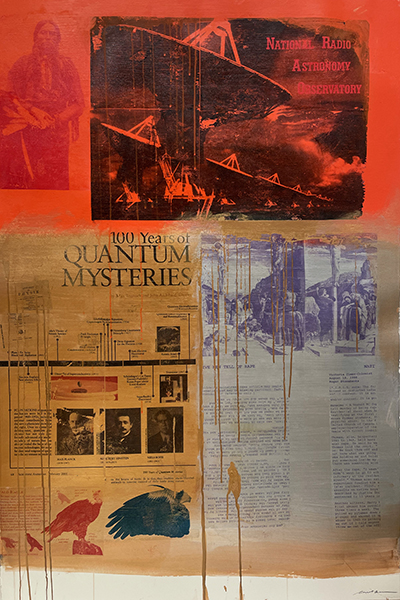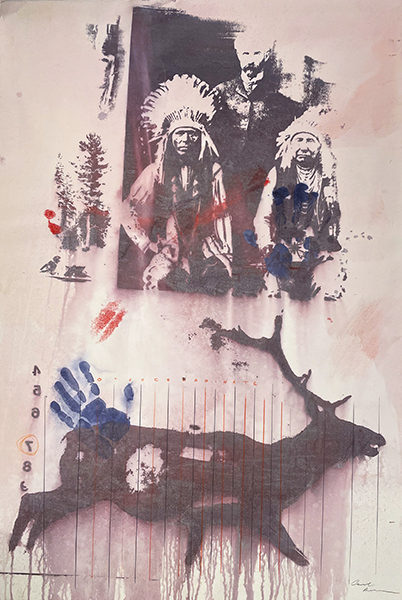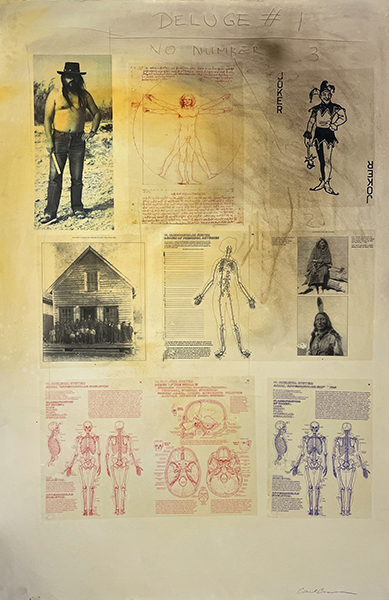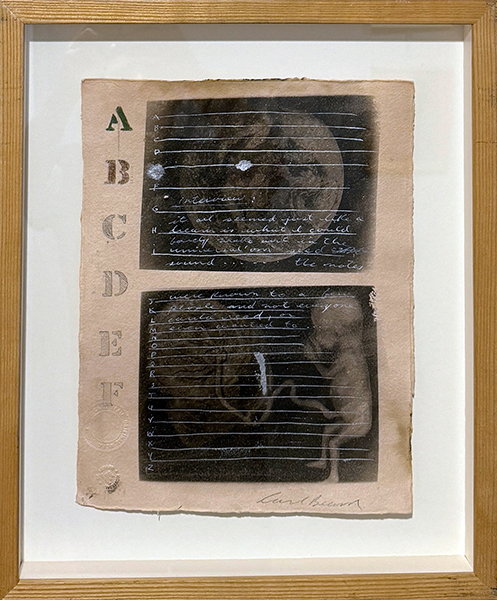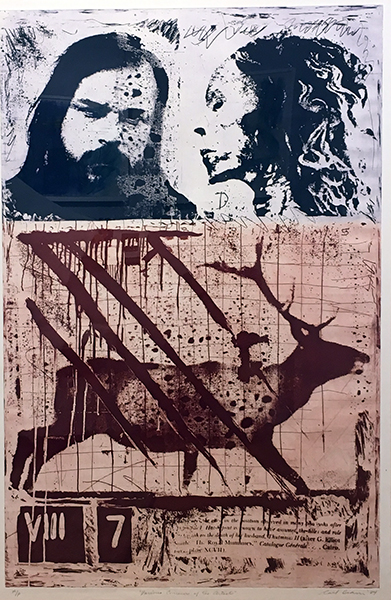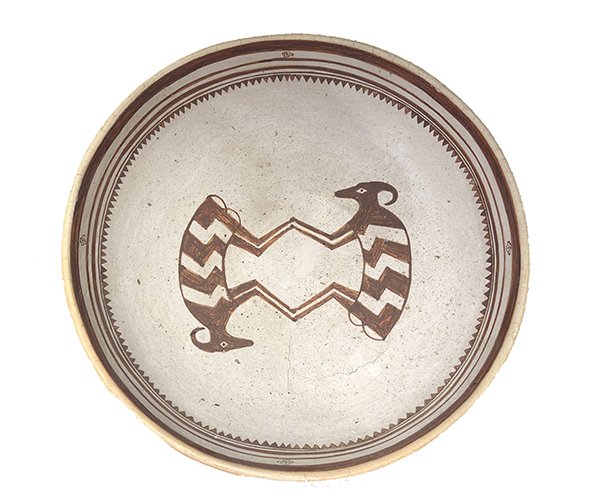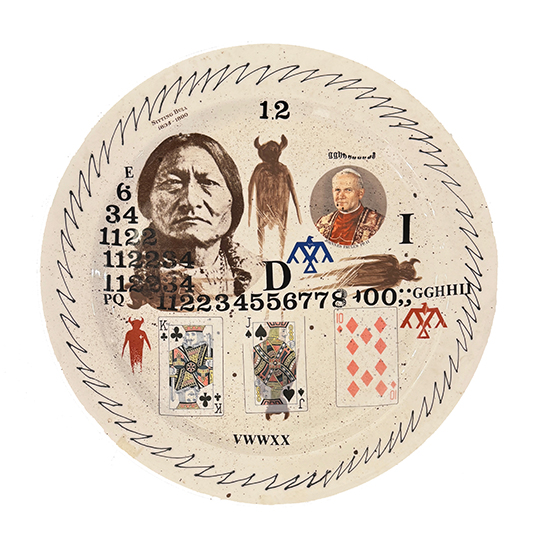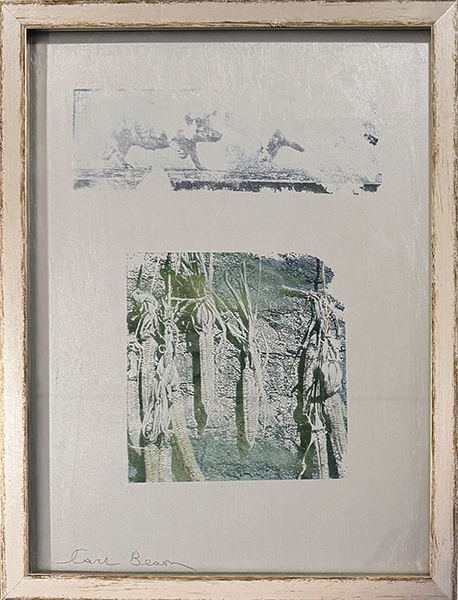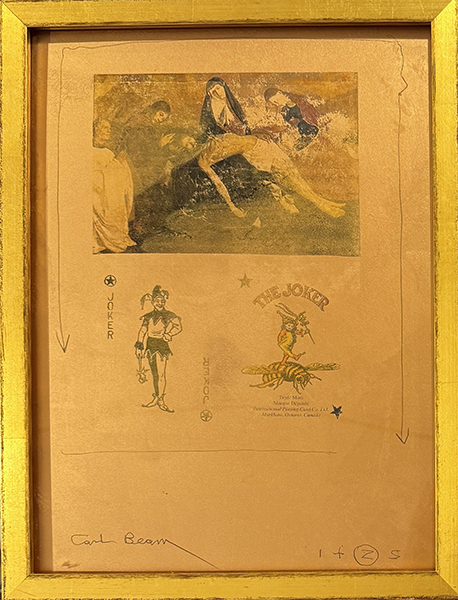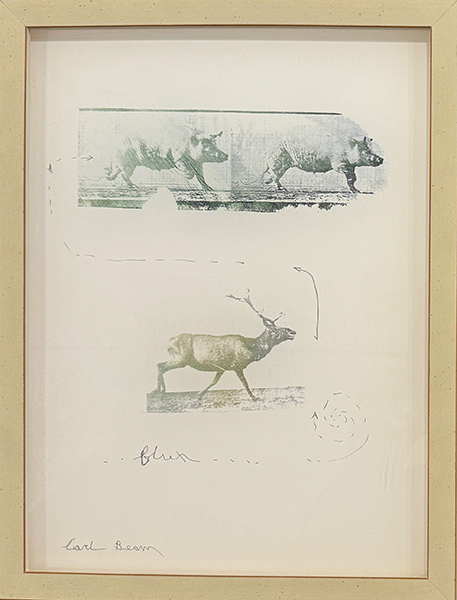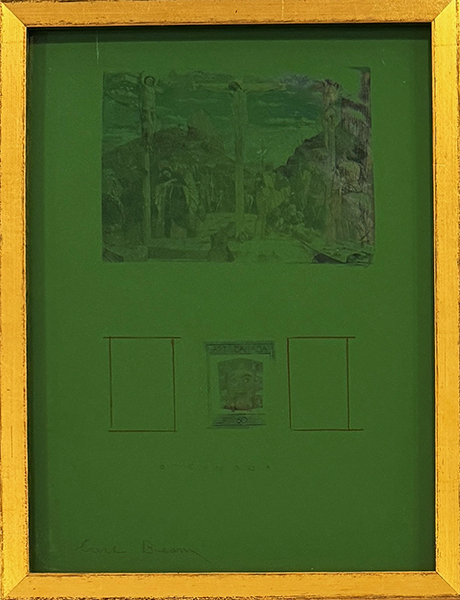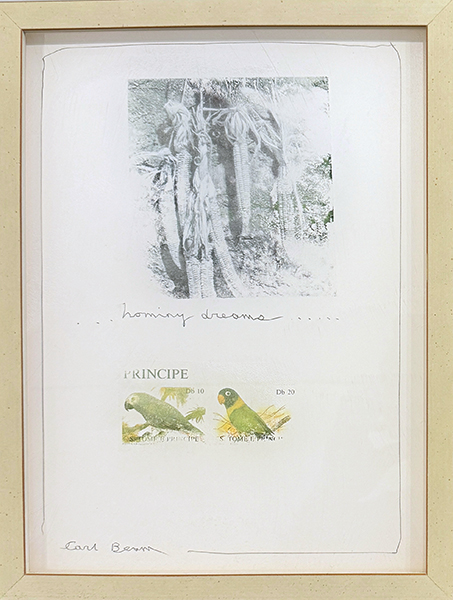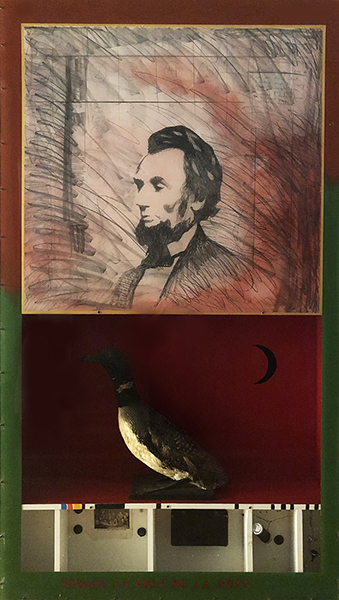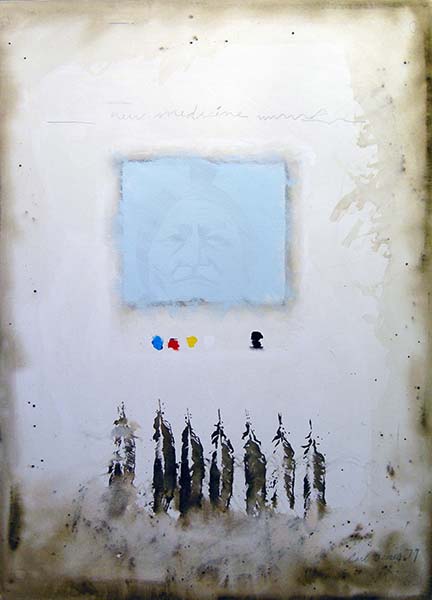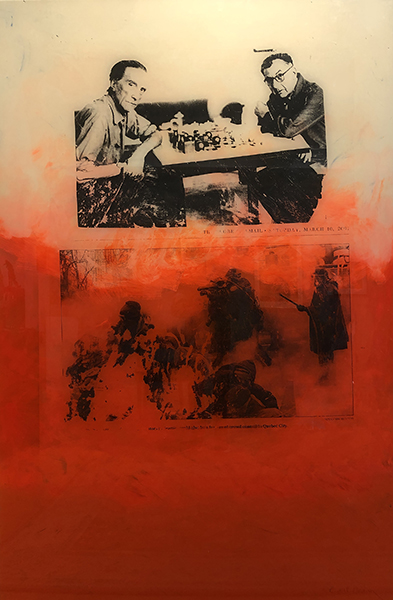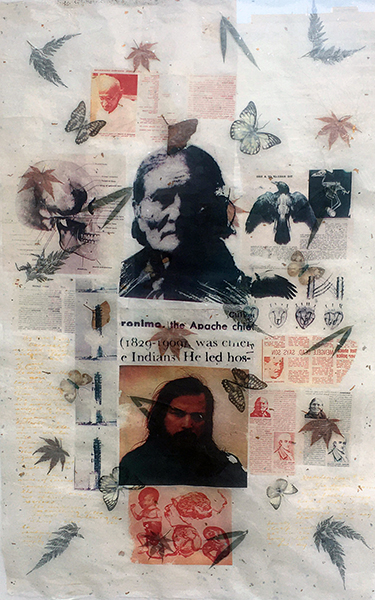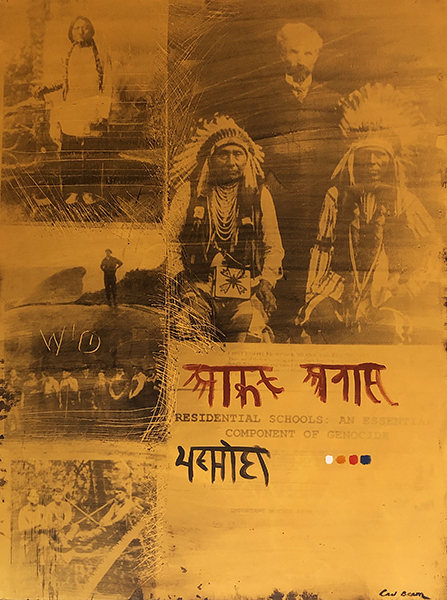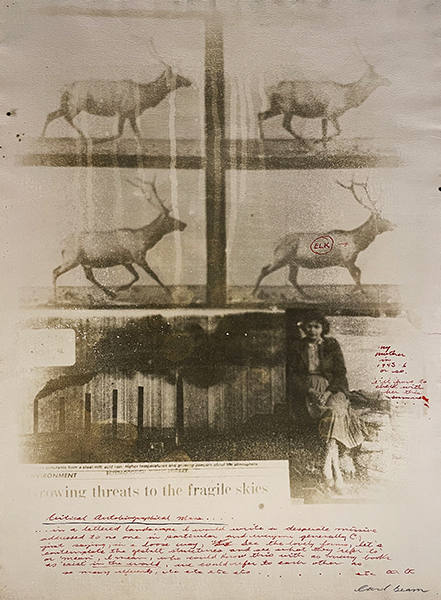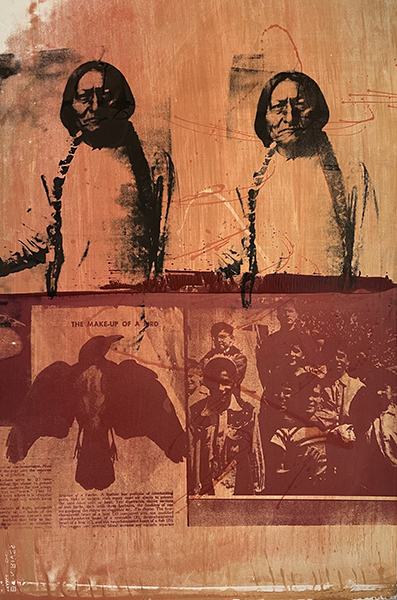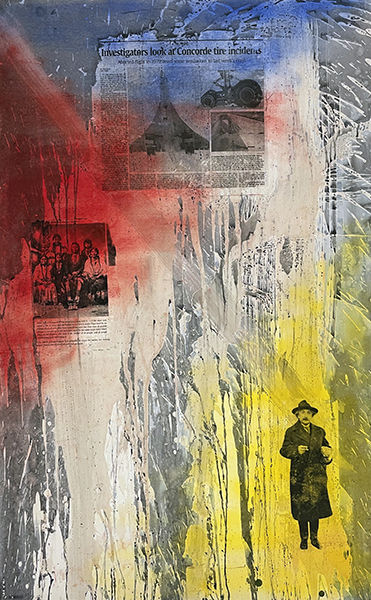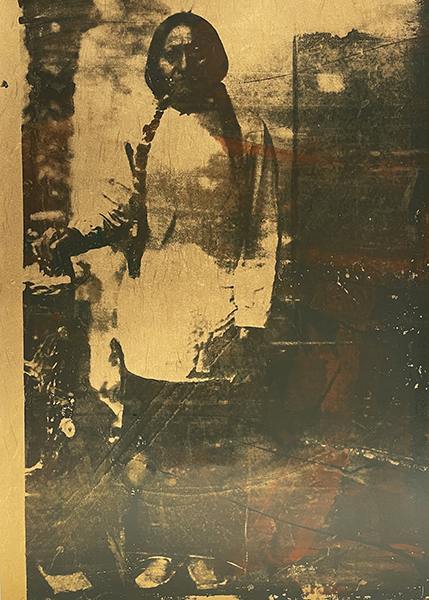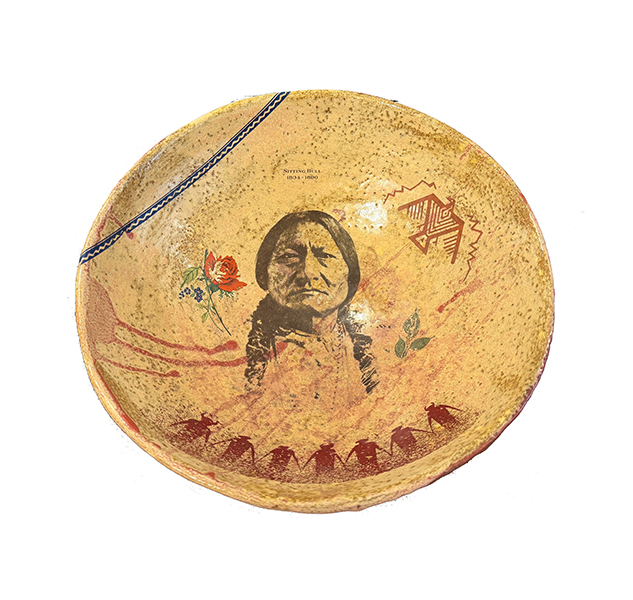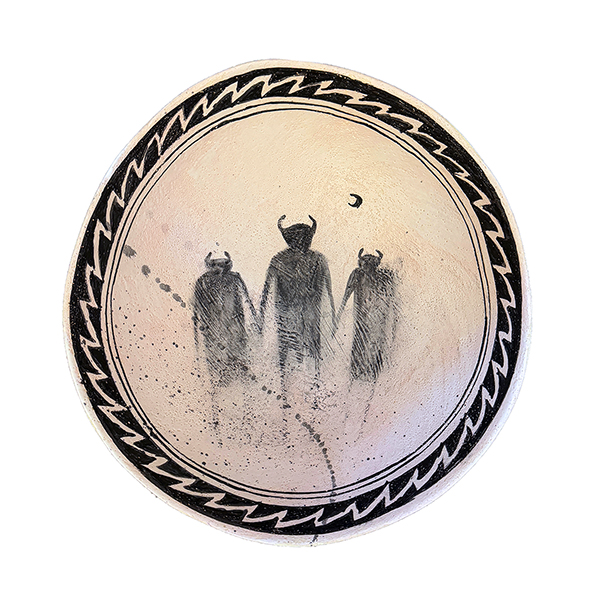Carl Beam
Carl Beam (1943-2005) – Biography
Carl Beam was born in M’Chigeeng (West Bay) on Manitoulin Island. As a child he was sent to the Garnier Residential School in Spanish, an experience referenced in several works through inclusion of a class photo in which he outlined himself with red ink. Beam’s art studies were at the Kootenay School of Art, the University of Victoria and the University of Alberta. In 1986, the National Gallery of Canada was the first of the major Canadian galleries to recognize Beam’s work with the purchase of The North American Iceberg, the first work acquired from an Indigenous artist as a contemporary work of art rather than as an ethnographic piece. From 1983–1992 his work was included in all the landmark exhibitions that altered the segregation of Indigenous art in Canada.
Beam told stories with pictures. His works can be read as morality plays juxtaposing long held perceptions with challenging alternatives. His well-known images, a Pieta, an embryo, Abraham Lincoln, Sitting Bull, a crow, the Pinta and Maria, Einstein, along with images from his family history, were used as cultural markers overlaid with references to time and space. With a linear pattern or formal grid, he tried to visually create the fourth dimension in his work, a spiritual space inhabited by a defiant intellect. That he was an artist of Indigenous and settler heritage added to the scope of the complex subjects he chose. Through his provocative and unrelenting imagery, Beam grappled with some of life’s most difficult issues: questions of identity, prejudice, homelessness, hunger – and how do we choose to live a “good” life. For Beam, these issues were never isolated. Our everyday actions and decisions have profound implications and effects on the world we live in. Thus, his art, and his life, became challenges to the prevailing status quo, and rallying cries and exhortations that we CAN do better if we try.
Carl Beam's paintings, etchings and constructions stand at the cutting edge of contemporary art and push insistently at its boundaries. In the 1990s Beam completed a self-portrait. It consisted of an image of a feather. His family’s Ojibwe name is Migwans which means “bird” or “feather”. Beneath the solitary feather he wrote: Carl Absolutely Nothing Migwans - a reference to the fact that the name “Beam” was an assigned one, with which there was no real connection. But in that he may have been incorrect. While it was not his family’s traditional name, “beam” can mean many things: something that provides support; something that shines brightly and illuminates things; a means of transmission for energy or information. In that, “Beam” is a fitting moniker.
A major retrospective of Carl Beam's work, organized by the National Gallery of Canada, was on display from October 22, 2010 to January 16, 2011 and went on tour to different cities in Canada and the United States. It recognizes Beam as one of Canada's most influential artists who succeeded in eliminating the boundary between aboriginal and contemporary art.
Awards and Honours:
Beam’s work has been included in many group exhibitions, including Indigena: Perspectives of Indigenous Peoples on Five Hundred Years, organized and circulated by the National Gallery of Canada in 1992. His artwork the North American Iceberg was the first work by an Indigenous artist to be added to the permanent contemporary collection of the National Gallery (1986), opening the door to subsequent acquisitions by other Indigenous artists in Canada.
In 2000, Carl Beam was inducted into the Royal Canadian Academy of the Arts, and in 2005 he was a recipient of the Governor General's Award in Visual and Media Arts.
Artist Specialization: Acrylic and Photo-Transfer Collage - Although he had formal training, Beam had a number of life experiences not specifically related to art-making and incorporated them into his work. He often culled images from his own life experience and juxtaposed them with historical and contemporary images, thus relating the “personal” with the larger “societal” picture. Stylistically his technique is more connected to Rauschenberg than to the Woodlands or traditional Indigenous art styles. His innovative techniques, in fact, have been emulated by a new generation of artists – Indigenous and not. Drawing inspiration from Anasazi and Mimbres cultures and techniques, Beam also created a unique approach to ceramics as a means of contemporary art-making. In an artist statement in 2005 Beam wrote: "The hemispherical quality of a large bowl still excites me…it is a universe unto itself, where anything can happen – the designs are limitless."
